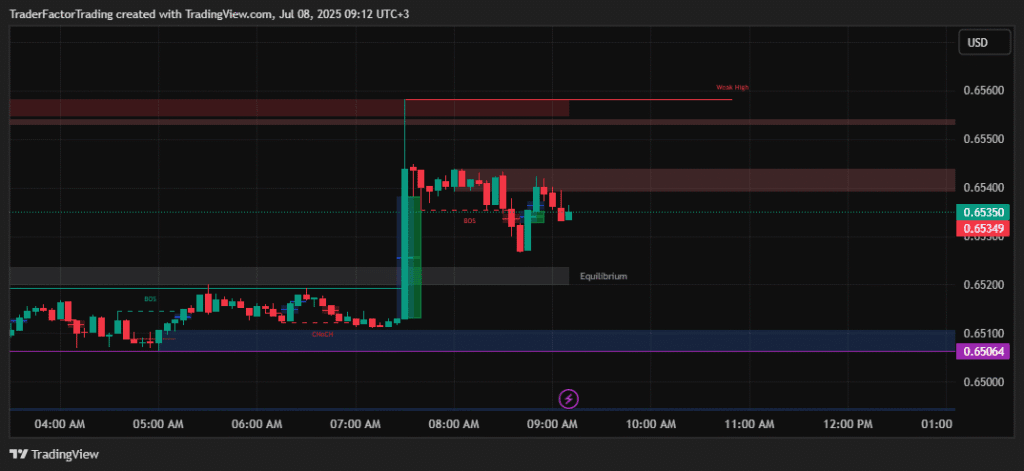The Reserve Bank of Australia (RBA) has decided to keep its cash rate target unchanged at 3.85% during its July 8, 2025, meeting. This decision aligns with market expectations as the bank evaluates the evolving economic conditions. With inflation moderating and global uncertainty persisting, the RBA has opted for a cautious approach. This choice reflects its focus on striking a balance between stabilizing prices and maintaining employment. The decision comes at a time when both domestic and international factors continue to shape Australia’s economic landscape.
Table of Contents
ToggleInflation Remains on a Declining Path
Inflation has shown significant improvements compared to its 2022 peak, thanks to tighter monetary policy. Headline inflation is now at the midpoint of the 2–3% target range, while trimmed mean inflation sits at 2.9%. The RBA expects inflation to stabilize around 2.5% in the medium term. Recent data from the consumer price index (CPI) suggest slower progress than anticipated. However, the central bank remains optimistic that inflationary pressures will ease further as higher interest rates reduce excess demand. This outlook underscores the effectiveness of prior rate increases in addressing price stability challenges.
Domestic Economic Conditions Show Mixed Signals
Domestically, Australia’s economy presents a mixed picture. On a positive note, private household demand has recovered gradually, and real incomes are beginning to rise. Financial stress has eased, particularly as cost-of-living pressures subside. However, businesses in some sectors report weak demand, limiting their ability to adjust prices. Labor market trends remain strong as unemployment and underemployment measures stay historically low. Yet, the lack of notable productivity improvements is keeping unit labor costs elevated. Consequently, wage growth has softened without achieving significant gains in productivity. These factors highlight a fragile recovery that requires careful monitoring.
Housing Market Outlook
The housing market plays a central role in shaping monetary policy decisions. Recent months have seen a stabilization in housing demand, spurred partly by income growth and declining financial stress. Although home prices remain high, transaction volumes suggest moderate activity. Mortgage holders continue to face elevated servicing costs due to past rate hikes, which dampens consumption. However, if rates hold steady, housing affordability could improve, offering a potential boost to economic stability. The RBA will likely observe these dynamics closely as they contribute to both financial market sentiment and broader economic health.
Global Uncertainty Adds Further Complexity
International factors add layers of complexity to the RBA’s monetary policy strategy. Persistent geopolitical tensions, trade policy changes, and fluctuating commodity prices cloud the global economic outlook. Although financial markets have recovered partly due to optimism over reduced US tariff risks, long-term trade consequences remain uncertain. For Australia, as a heavily trade-dependent economy, these developments could affect export demand and domestic production. Simultaneously, monetary easing in key trading countries may pressure the Australian dollar. These interconnected risks demand a proactive yet cautious monetary policy stance to safeguard economic stability.
Monetary Policy Focuses on Balance
The RBA has emphasized that maintaining inflation within its target range and supporting full employment remain its priorities. By keeping the cash rate unchanged, the board avoids disrupting the economy further. However, caution characterizes this approach, as uncertainties over aggregate demand and labor market conditions persist. The gradual response strategy ensures flexibility to adapt to unexpected global or domestic shocks. The central bank continues to highlight data dependency in guiding future moves, adding further rigor to its policy decisions.
Impact on Currency
AUDUSD

The Reserve Bank of Australia’s decision to hold the cash rate steady at 3.85% is likely to have a mixed impact on the Australian dollar (AUD). On one hand, the cautious monetary stance signals stability, which could support investor confidence in the currency. However, with other central banks globally adopting more aggressive rate changes, the AUD may face downward pressure as interest rate differentials narrow. Additionally, persistent global uncertainties and slower-than-expected inflation progress could weigh on the AUD’s performance. The currency’s trajectory will largely depend on future economic data and market sentiment regarding the RBA’s ability to navigate these challenges effectively.
Conclusion
The Reserve Bank of Australia’s decision to hold rates at 3.85% reflects a measured response to diverse challenges. With inflation improving but risks remaining, the bank prioritizes stability. By focusing on both price control and employment, the RBA underscores its commitment to long-term economic resilience. This decision frames a delicate balance as Australia charts its recovery.
Disclaimer:
TraderFactor or partners have prepared all the information. The information does not contain a record of TraderFactor or partner’s prices or an offer of or solicitation for a transaction in any financial instrument. No representation or warranty is given as to the accuracy or completeness of this information. Any material provided does not regard the specific investment objective and financial situation of any person who may read it. Past performance is not a reliable indicator of future performance.

















